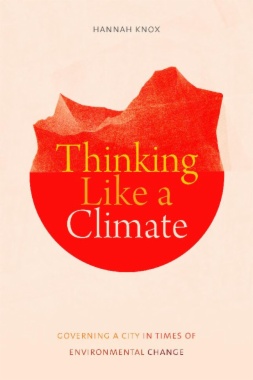In Thinking Like a Climate Hannah Knox confronts the challenges that climate change poses to knowledge production and modern politics. Drawing on ethnographic fieldwork among policy makers, politicians, activists, scholars, and the public in Manchester, England—birthplace of the Industrial Revolution—Knox explores the city's strategies for understanding and responding to deteriorating environmental conditions. Climate science, Knox argues, frames climate change as a very particular kind of social problem that confronts the limits of administrative and bureaucratic techniques of knowing people, places, and things. Exceeding these limits requires forging new modes of relating to climate in ways that reimagine the social in climatological terms. Knox contends that the day-to-day work of crafting and implementing climate policy and translating climate knowledge into the work of governance demonstrates that local responses to climate change can be scaled up to effect change on a global scale.
- Cover
- Contents
- Abbreviations
- Preface and Acknowledgments
- Introduction · Matter, Politics, and Climate Change
- Part I | Contact Zones
- Climate Change in Manchester: An Origin Story
- One · 41% and the Problem of Proportion
- How the Climate Takes Shape
- Two · The Carbon Life of Buildings
- Footprints and Traces, or Learning to Think Like a Climate
- Three · Footprints, Objects, and the Endlessness of Relations
- When Global Climate Meets Local Nature(s)
- Four · An Irrelevant Apocalypse: Futures, Models, and Scenarios
- Cities, Mayors, and Climate Change
- Five · Stuck in Strategies
- Part II | Rematerializing Politics
- Six · Test Houses and Vernacular Engineers
- Seven · Activist Devices and the Art of Politics
- Eight · Symptoms, Diagnoses, and the Politics of the Hack
- Conclusion · "Going Native" in the Anthropocene
- Notes
- References
- Index

